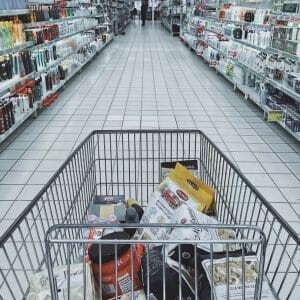
5 Ways to Save Money Grocery Shopping
Make a list. Don’t hit the grocery store when you’re hungry. Clip coupons. Buy stuff on sale. You’ve heard the same obvious grocery shopping advice before, but here’s the reality: Your mad supermarket dash after work (or squeezed between brunch plans and a quick workout on the weekend) isn’t always planned. These tips can make your next grocery run more efficient and way easier on your wallet.
1. Limit your number of aisles
Pick the key aisles you need to hit (produce, meat, dairy) and avoid those strolls down the spice, snack, or frozen-goods aisles just in case you “forget” something on your nonexistent list. Shoppers who hit most or all of the aisles in a store check out with plenty more impulse buys than shoppers who visit fewer aisles.
2. Scan your own groceries
Remember when you were a kid and loved to play pretend grocery clerk? Your childhood dreams are coming true. Most self-checkout lanes aren’t packed with tempting racks of candy, trashy novels, tabloid magazines, and novelty toys—impulse-buy items designed to grab your attention (and money) while you’re waiting for the clerk to get a price check on a can of tuna.
Related: Why is feeding a family so expensive?
3. Listen to a playlist
Bring headphones and tune in to your most up-tempo, upbeat playlist while shopping. Why? It’ll keep you zipping down the aisles quickly. So avoid the slower tempo songs as your body will slow down whilst shopping and you may get distracted with impulse buys.
4. Avoid a handheld basket
You’d think small basket = fewer groceries = less money, but pushing a full-size cart could help you make smarter food choices. (Who knew?!) If you’re holding a small basket you could end up buying more pleasurable impulse buys (like junk food). One possible reason? The uncomfortable sensation of holding a basket may prompt people to choose items that offer immediate gratification.
5. Look high and low
Always check the shelves above and below chest-level height—grocery stores tend to stock higher-priced items where they’re easiest to reach. you may or may not have heard that “eye level is buying level” Which indicates that products positioned at eye level are likely to sell better. Be sure to look up, down, and all around.
